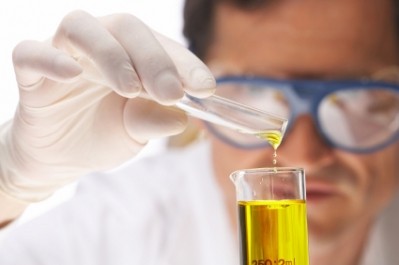Understanding how AHAs work could lead to better cosmetic formulations, study

The team, made up of researchers from California’s UC Davis and China’s Peking University, discovered a mechanism that may explain how alpha hydroxyl acids (AHAs), which are used in anti-aging creams, work to enhance skin appearance.
AHAs are a group of weak acids typically derived from natural sources such as sugar cane, sour milk, apples and citrus, that are well known in the cosmetics industry for their ability to enhance the appearance and texture of skin.
Improve understanding
The aim with this study is to improve understanding of how AHAs actually caused skin to flake off and expose fresh, underlying skin, opening up the possibility for future development in cosmetics.
In their study, the investigators focused on the cellular pathway that concerns an ion channel (TRPV3) located in the cell membrane of keratinocytes, the predominant cell type in the outer layer of skin; a channel used in other studies to identify the role of skin physiology and temperature sensitivity.
Throughout the study, tests involved recording electrical currents across cultured cells exposed to AHAs, with the researchers developing a model that describes how glycolic acid enters into keratinocytes and generates free protons, creating acidic conditions within the cell.
Calcium ion overload
The low pH strongly activates the TRPV3 ion channel, opening it and allowing calcium ions to flow into the cell, resulting in calcium ion overload in the cell leading to its death and skin exfoliation.
"Our experiments are the first to show that the TRPV3 ion channel is likely to be the target of the most effective skin enhancer in the cosmetics industry," said Jie Zheng, professor of physiology and membrane biology at UC Davis and one of the principal investigators of the study.
"Although AHAs have been used for years, no one until now understood their likely mechanism of action."
The findings were published in the Journal of Biological Chemistry, in an article entitled ‘Intracellular proton-mediated activation of TRPV3 channels accounts for exfoliation effect of alpha hydroxyl acids on keratinocytes.’







![Curie Co has launched a naturally derived bond builder which it believes has the potential to be an effective anti-humidity hair care solution for South East Asia. [Getty Images]](/var/wrbm_gb_food_pharma/storage/images/_aliases/wrbm_tiny/publications/cosmetics/cosmeticsdesign-asia.com/headlines/formulation-science/curie-co-believes-its-bond-builder-can-bring-effective-anti-humidity-hair-solutions-to-sea/17375805-1-eng-GB/Curie-Co-believes-its-bond-builder-can-bring-effective-anti-humidity-hair-solutions-to-SEA.jpg)
![The Whoo has helped to bolster sales for LG H&H and restore the firm’s growth trajectory. [The Whoo]](/var/wrbm_gb_food_pharma/storage/images/_aliases/wrbm_tiny/publications/cosmetics/cosmeticsdesign-asia.com/headlines/business-financial/lg-h-h-beauty-returns-to-growth-on-the-back-of-the-whoo-renewal/17378661-1-eng-GB/LG-H-H-beauty-returns-to-growth-on-the-back-of-The-Whoo-renewal.jpg)
![Skinidea has developed a new skin care brand, MDP, specifically to target US beauty consumers. [Medipeel]](/var/wrbm_gb_food_pharma/storage/images/_aliases/wrbm_tiny/publications/cosmetics/cosmeticsdesign-asia.com/headlines/business-financial/skinidea-develops-new-brand-to-target-us-market-as-part-of-expansion-plans/17362677-1-eng-GB/Skinidea-develops-new-brand-to-target-US-market-as-part-of-expansion-plans.jpg)
![Organic Bioactives has debuted hair care solutions for the first time. [Getty Images]](/var/wrbm_gb_food_pharma/storage/images/_aliases/wrbm_tiny/publications/cosmetics/cosmeticsdesign-asia.com/headlines/formulation-science/organic-bioactives-launches-native-nz-botanicals-hair-care-actives/17376246-1-eng-GB/Organic-Bioactives-launches-native-NZ-botanicals-hair-care-actives.jpg)


![Toyo Sugar enzymatically modified resveratrol to make it water-soluble and more bioavailable. [Getty Images]](/var/wrbm_gb_food_pharma/storage/images/_aliases/wrbm_tiny/publications/cosmetics/cosmeticsdesign-asia.com/headlines/formulation-science/toyo-sugar-produces-water-soluble-resveratrol-for-cosmetics/17378607-1-eng-GB/Toyo-Sugar-produces-water-soluble-resveratrol-for-cosmetics.jpg)


